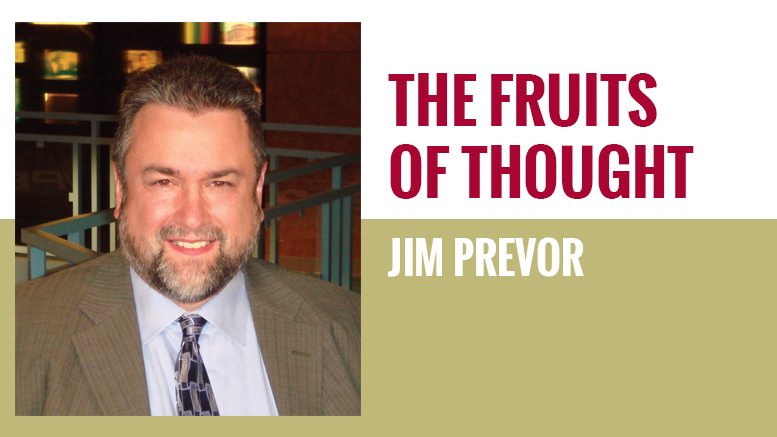Policies Without Quantification Bankrupt Us All
August 6, 2020 | 4 min to read
The article discusses the critical need for decision-making in both business and government, particularly during crises like COVID-19. It emphasizes that while businesses face the harsh reality of bankruptcy for poor decisions, governments often lack such accountability. The text highlights the societal risks associated with *road crashes*, *influenza*, and pandemic responses, urging the necessity for quantifying risks in governmental actions. Ultimately, it warns that governmental missteps can have devastating impacts on the public, potentially leading to their own forms of bankruptcy.

Originally printed in the July 2020 issue of Produce Business.
The big advantage business has is bankruptcy. If management doesn’t think about the relevant issues, the company may go under. Government doesn’t have that concern.
How should we make decisions in business and in life? The COVID-19 situation — and how we have dealt with, and are dealing with it — raises questions that apply to our behavior in almost everything we do.
The world is filled with risks. ASIRT, the Association for Safe International Road Travel, explains the facts about driving:
• More than 38,000 people die every year in crashes on U.S. roadways. The U.S. traffic fatality rate is 12.4 deaths per 100,000 inhabitants.
• An additional, 4.4 million are injured seriously enough to require medical attention.
• Road crashes are the leading cause of death in the U.S. for people aged 1 to 54.
• The economic and societal impact of road crashes costs U.S. citizens $871 billion per year.
Since 2010, the Centers for Disease Control and Prevention (CDC) reports that influenza in the United States has resulted in 9 million–45 million illnesses, 140,000–810,000 hospitalizations and 12,000–61,000 deaths annually. The numbers fluctuate dramatically based on the lethality of that year’s flu virus and the effectiveness of that year’s flu vaccine.
Here is the current data for the two most recent years:

Many efforts to minimize risk are questionable. For example, it makes many people feel more comfortable to wear a mask. They feel both safer personally and that they are better people as they think they are protecting other people. The truth, though, is that the evidence is weak on all these factors. The United Kingdom government, for example, published this advice:
“The evidence suggest that wearing a face covering does not protect you…”
“It is important to know that the evidence of the benefit of using a face covering to protect others is weak and the effect is likely to be small…”
One of the problems is that many are often as interested in protecting their own “side” as they are in telling the truth. Online editor for Commentary, Noah Rothman, pointed this out in a piece titled, “The Protests and the Surge”:
It should be intuitive that leading young people into the streets to crowd each other and issue spittle-flecked screams of outrage into the air contributed to the virus’s resurgence as much as any other social behavior. Of course, it is intuitive, and you have to labor to convince yourself otherwise. Unfortunately, too many in national media outlets are invested in doing just that.
“There is no evidence yet that the wave of Black Lives Matter protests across the U.S. sparked COVID-19 outbreaks in the more than three weeks since they began,” NBC News reported last week, citing the National Bureau of Economic Research. That is reassuring enough until you get to the following paragraph. “Rather, as the protests went on,” the dispatch continued, “people who were not participating increasingly stayed at home.”
In other words, whatever risk of infection posed by these protests was offset by the number of people avoiding them. That rather straightforward portrayal of the facts was filtered through the game of telephone that is the Internet until the garbled message on the other end of the line became the unsupportable conclusion that social-justice activism somehow immunized the demonstrators against COVID-19.
In business, one is typically required to make a claim for how a proposed activity will benefit the company. You want the company to launch a new product or service? Well, you better be prepared to articulate what that will cost, what revenue it will bring in… the profit picture, etc. Sure, one can argue for reputational enhancements, but, still, in business one typically needs to persuade that the reputational enhancement will lead to higher sales, easier recruitment, etc.… In the end, higher profits.
In contrast, many governmental actions lack quantification. We’ve seen this for years in food safety. Countless millions of pounds in food are just thrown in the garbage because some unknown and unstated percentage is deemed dangerous. You wind up with bizarre situations where consumers are scared to death of eating a salad — and that behavior gets banned — but then they go off and do something such as driving a car — or skydiving! — which is more dangerous.
Now, we have children not going to school, student-athletes not able to do their sport, student actors and singers not able to perform. Again, the government won’t say what the risk is of going to school. Institutions are petrified they will be sued but, again, the risk is not quantified. Alternative dangers are not articulated. Will the suicide rate rise if kids get depressed because their opportunities are stymied because schools and extra-curricular activities are not available? Will incomes be permanently affected because lower-income parents had to go to work while wealthier families tutored their children?
How can one make a policy without answering these questions?
The big advantage business has is bankruptcy. If management doesn’t think about the relevant issues, the company may go under.
Government doesn’t have that concern. But the people whom government is supposed to serve can certainly go bankrupt due to poor decision-making by governmental authorities.
17 of 17 article in Produce Business August 2020

